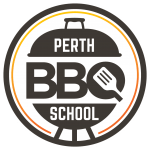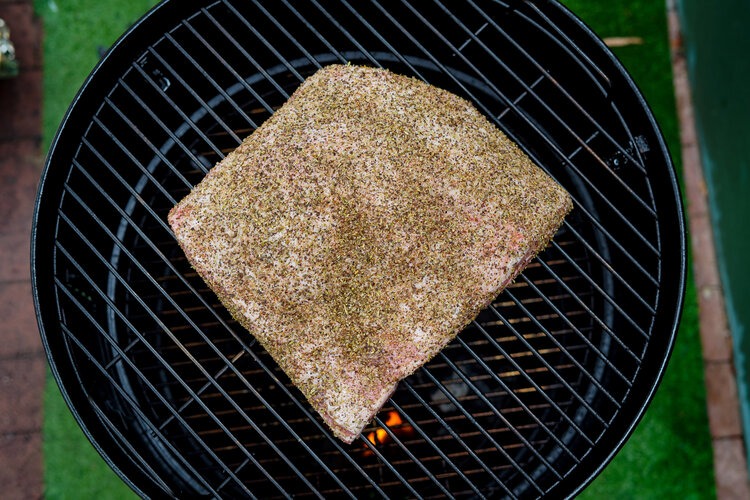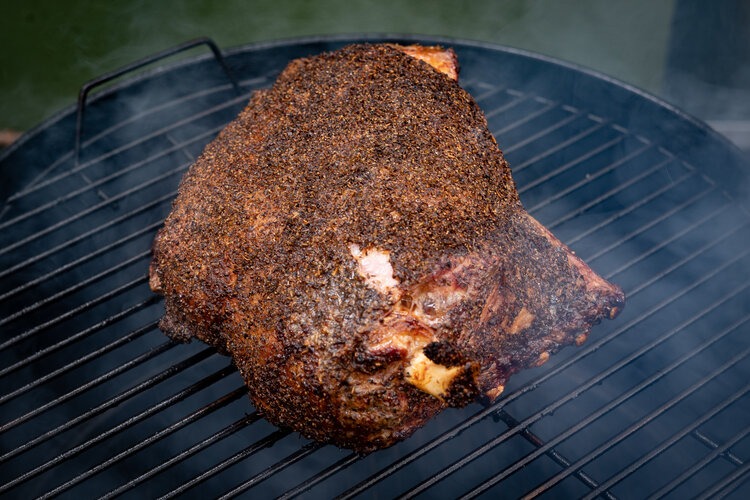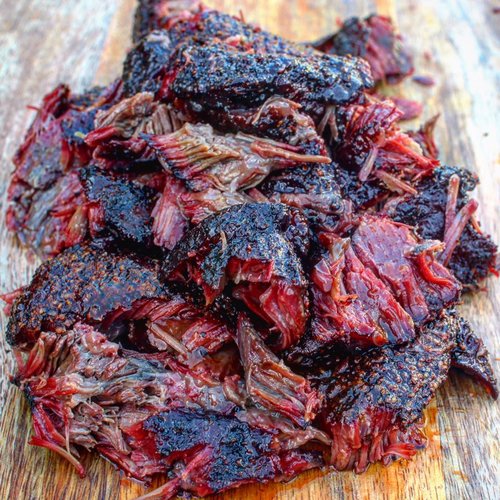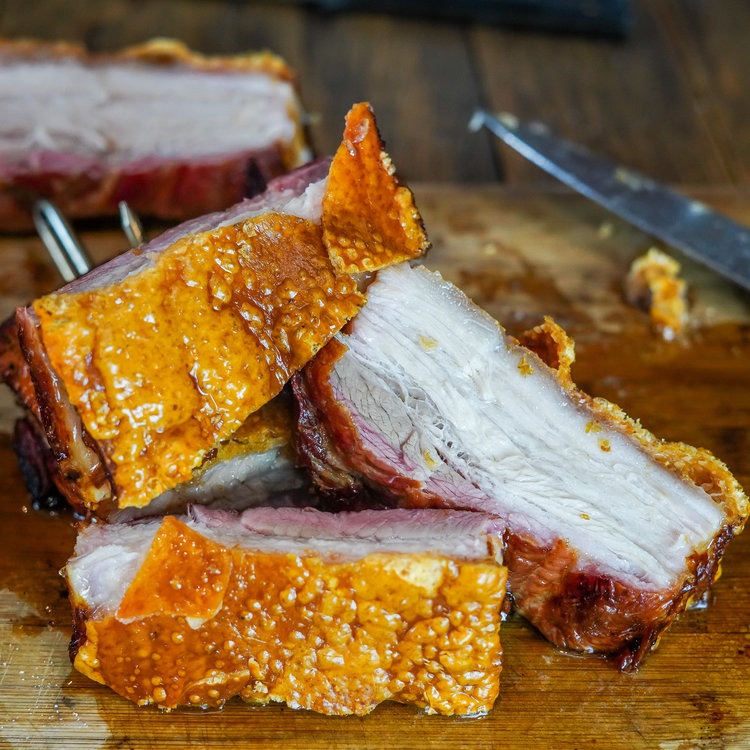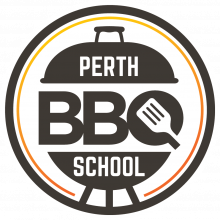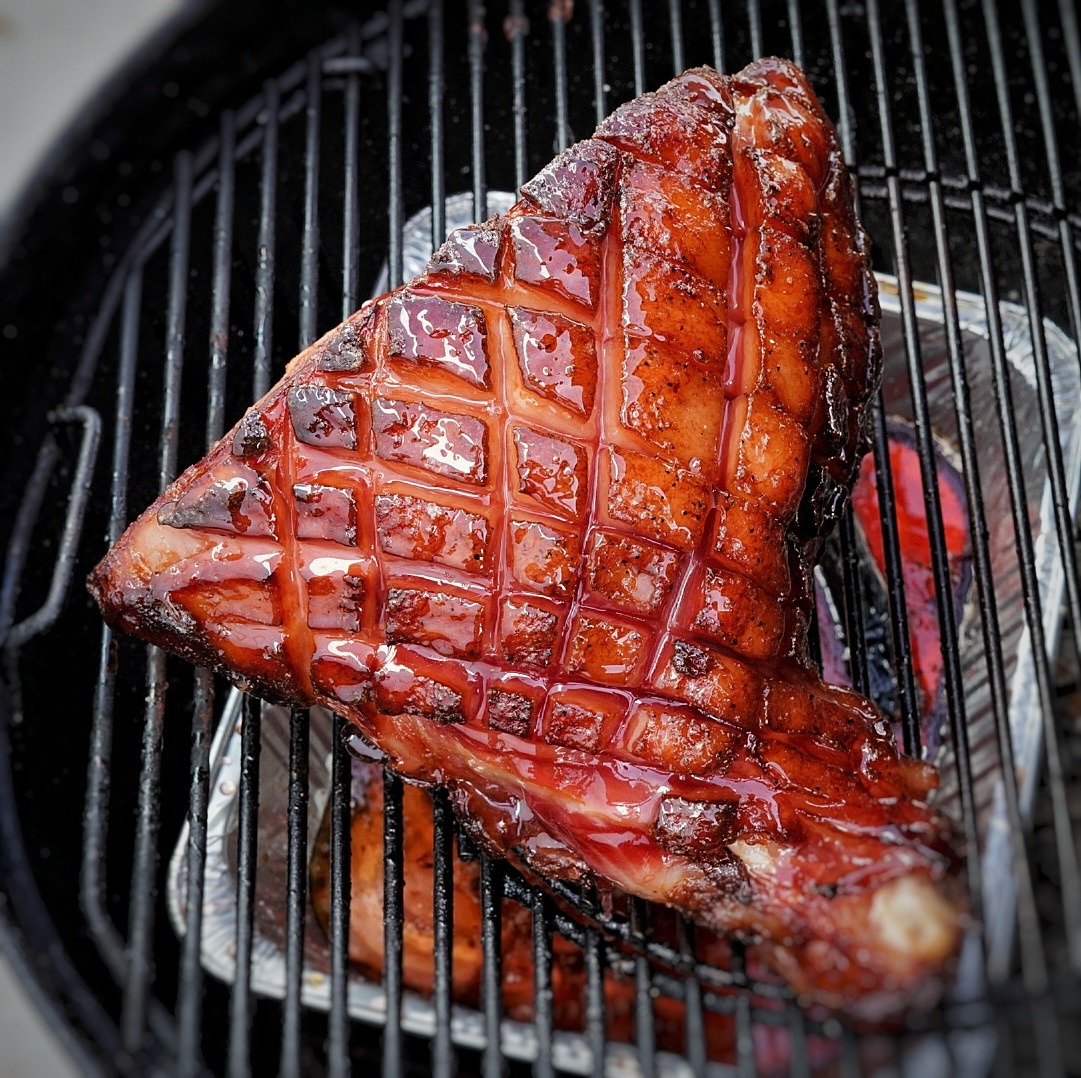
Pulled lamb feels like the dish that shows Aussies have taken American barbecue on board and started to make it their own. Lamb is so quintessentially Australian – sometimes I wonder if that’s just due to a solid marketing campaign featuring Sam Kekovich, but either way it’s delicious.
For pulled lamb we use lamb shoulder as it’s full of all that amazing connective tissue, fat and other goodies that will break down over the course of a long cook to deliver a moist, flavourful result.
Lamb shoulder is an extraordinarily forgiving cut and can absolutely handly a much hotter and faster cook; running your pit at around 350f you can knock out a lamb shoulder in around 4 hours pretty easily. The strange thing about lamb shoulder is there seems to be no middle ground, any time I try to run at a slightly reduced temp it seems to extend in to a 12 hour cook – this is purely anecdotal, but regardless it means hot and fast tends to be my preferred approach.
Method:
-
Timing: 6-7 hours including rest.
-
Set up your barbecue for 350f (175c) give or take 50f
-
Season lamb shoulder with rub of choice (I used Greenwood Barbecue – Tree Bark)
-
Foil wrap once bark has set, around 175f internal, approx 2 hours in
-
Continue to cook until probe tender, internal temp around 207-210f (97-98c)
-
Rest 1-2 hours on bench
-
Shred and serve
The cut:
Lamb shoulder can be butchered a few different ways but the most commonly available, and my preferred cut, is square cut lamb shoulder. This cut will still contain some bones from the front leg, shoulder blade and top part of the rib cage, along with a nice layer of surface fat. The bones will not only add flavour but will be crucial in protecting the meat with our hot and fast approach.
The seasoning:
Use any flavouring that blows your hair back, however bear in mind a rub with a high sugar content will burn with this cooking style. I’ve played around with a number of rubs, made my own rubs and I frequently end up coming back to Dan Greenwood’s Tree Bark rub, it’s everything a lamb rub should be. On paper it’s basically just salt and herbs but whatever he does (sprinkles crack in it, I would imagine) it is untouchable.
BBQ Set Up:
My go to for lamb shoulder is my Pro Q bullet smoker as I can ramp it up to 350f quickly and easily.
For this cook I have removed the water tray entirely (can see in above picture) to allow for radiant heat from the charcoal to assist in boosting the heat – this is why the square cut shoulder is important, those bones will act as a shield.
Set up your barbecue of choice to run at 350f, if it’s not the right shape or design for that addition of a small amount of radiant direct heat, don’t stress, indirect 350f will still be great.
I filled the charcoal basket with lump charcoal, lit the centre of the basket in a classic minion method style, added one chunk of pecan wood, then allowed the smoker to come up to 350f.
On the topic of smoke: pecan, or any fruit wood will work here, I only use one chunk because lamb has such a beautiful flavour I don’t want to go too aggressively on the smoke.
Regarding fuel, I prefer lump charcoal for this cook due to the absence of a deflector / water tray. There’s something about fat hitting charcoal that is just perfect; briquettes dont seem to deliver the same satisfaction.
The Cook:
While time and temp is only ever a rough guide, I’ve found once I dialled in my method for lamb shoulder it never seems to stray too far from 4 hours (maybe half an hour either side) as long as I keep that temp at 350f min.
Roughly 2 hours in, the bark should be set (see above) and the internal temp should be around 175f; at this point we want to wrap the shoulder in foil and continue to cook. This is more about stopping the shoulder from carbonising too much in this high heat environment and keeping a bit of moisture in. Wrapping too early will affect the bark as it either won’t have set or the shoulder will still be in the middle of “the stall“ phase where it’s trying to shed water (and if it sheds water in foil it will get soggy).
Note: will need to be careful with the wrapping, with all those bones it’s easy to tear through the foil unless you have that Bunnings spaceship foil, so will need a couple of layers.
Continue to cook for a further 2 hours (keep an eye on it because sometimes the foil can really rocket it ahead in just an hour) until the internal temp starts to approach 207f-210 f but importantly, that the shoulder is probe tender.
The high-ish internal temp is twofold – firstly, that square cut shoulder has a lot that needs to be broken down; secondly, broadly speaking the hotter and faster your cook, the higher your final internal temperature will need to be as time and temp are relative and you still need to break everything down.
Rest:
Once probe tenderness is achieved, remove from the barbecue and rest on your bench (still wrapped in foil) for 1-2 hours. This will facilitate further breakdown of connective tissue plus allow that internal temperature to drop. Ideally pull the lamb around the 165f internal, give or take. Too hot and it will dry out, burn your fingers, burn your mouth; too cold and – well, cold lamb fat is nobody’s friend.
If it’s your first time doing lamb shoulder aim for a 3 hour rest in case your cook doesn’t go to plan!
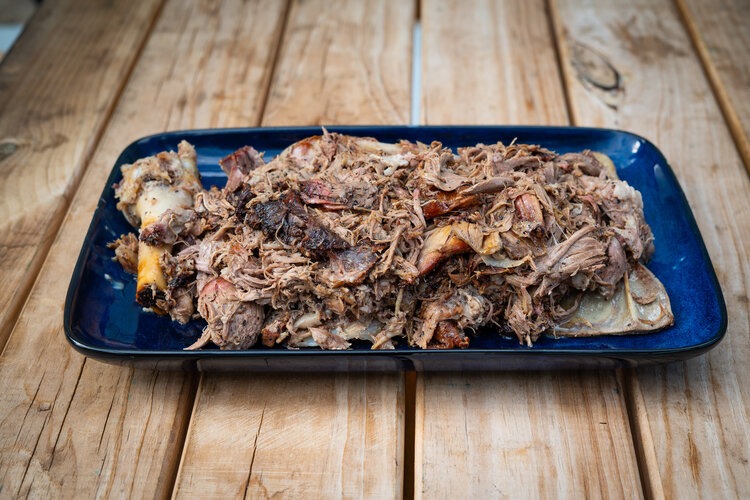
Pull and serve – make sure you pull the lamb in front of your guests, it’s better for the end product but also sliding that blade bone clean out will impress everyone!
